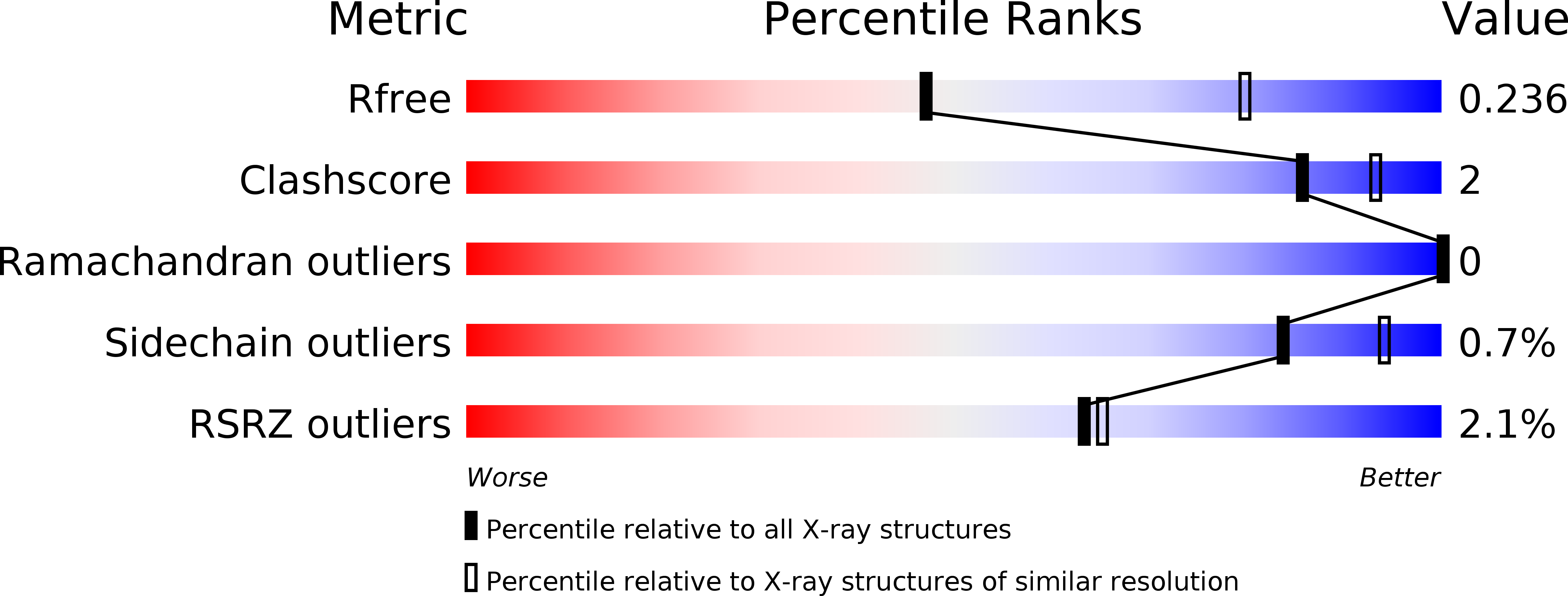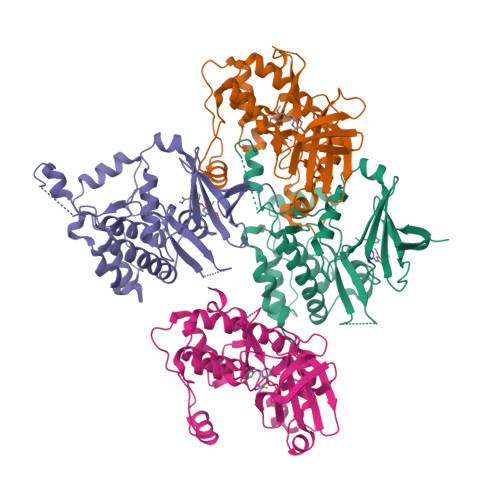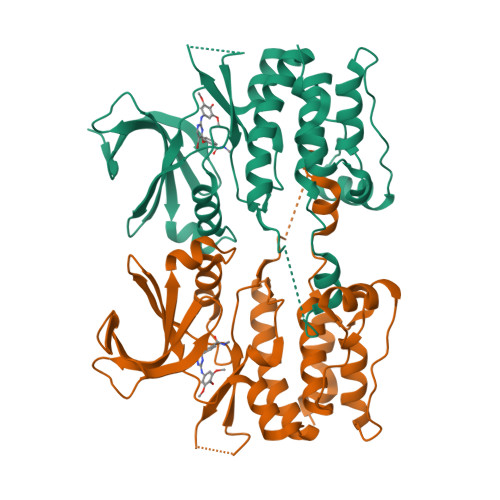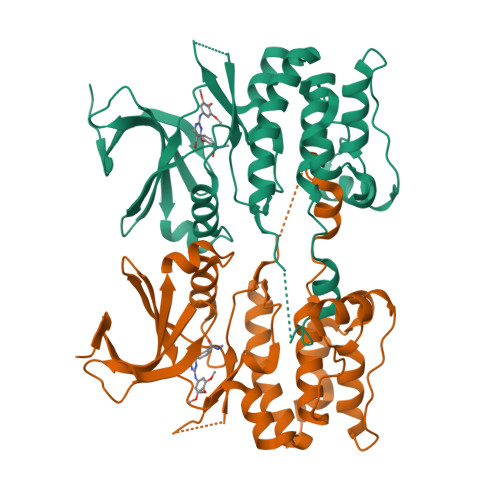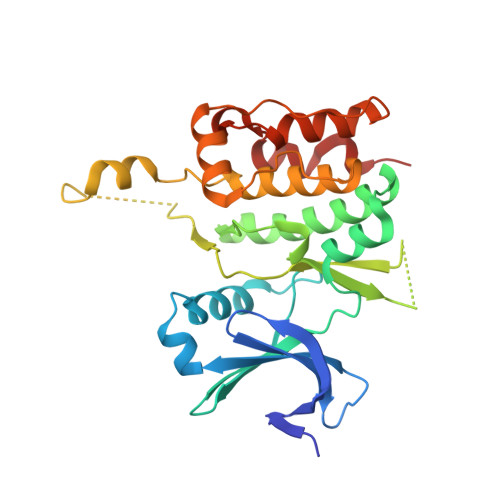Design, Synthesis, and Characterization of an Orally Active Dual-Specific ULK1/2 Autophagy Inhibitor that Synergizes with the PARP Inhibitor Olaparib for the Treatment of Triple-Negative Breast Cancer.
Ren, H., Bakas, N.A., Vamos, M., Chaikuad, A., Limpert, A.S., Wimer, C.D., Brun, S.N., Lambert, L.J., Tautz, L., Celeridad, M., Sheffler, D.J., Knapp, S., Shaw, R.J., Cosford, N.D.P.(2020) J Med Chem 63: 14609-14625
- PubMed: 33200929
- DOI: https://doi.org/10.1021/acs.jmedchem.0c00873
- Primary Citation of Related Structures:
6YID - PubMed Abstract:
Inhibition of autophagy, the major cellular recycling pathway in mammalian cells, is a promising strategy for the treatment of triple-negative breast cancer (TNBC). We previously reported SBI-0206965, a small molecule inhibitor of unc-51-like autophagy activating kinase 1 (ULK1), which is a key regulator of autophagy initiation. Herein, we describe the design, synthesis, and characterization of new dual inhibitors of ULK1 and ULK2 (ULK1/2). One inhibitor, SBP-7455 (compound 26 ), displayed improved binding affinity for ULK1/2 compared with SBI-0206965, potently inhibited ULK1/2 enzymatic activity in vitro and in cells, reduced the viability of TNBC cells and had oral bioavailability in mice. SBP-7455 inhibited starvation-induced autophagic flux in TNBC cells that were dependent on autophagy for survival and displayed synergistic cytotoxicity with the poly (ADP-ribose) polymerase (PARP) inhibitor olaparib against TNBC cells. These data suggest that combining ULK1/2 and PARP inhibition may have clinical utility for the treatment of TNBC.
Organizational Affiliation:
Cancer Molecules & Structures Program, NCI-Designated Cancer Center, Sanford Burnham Prebys Medical Discovery Institute, La Jolla, California 92037, United States.







